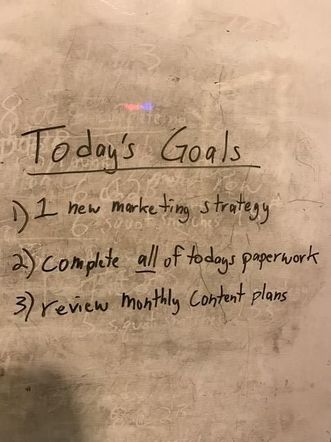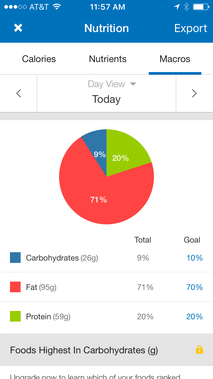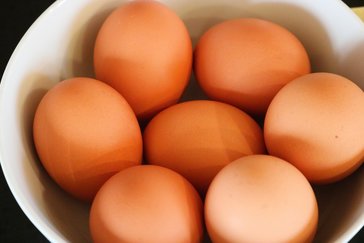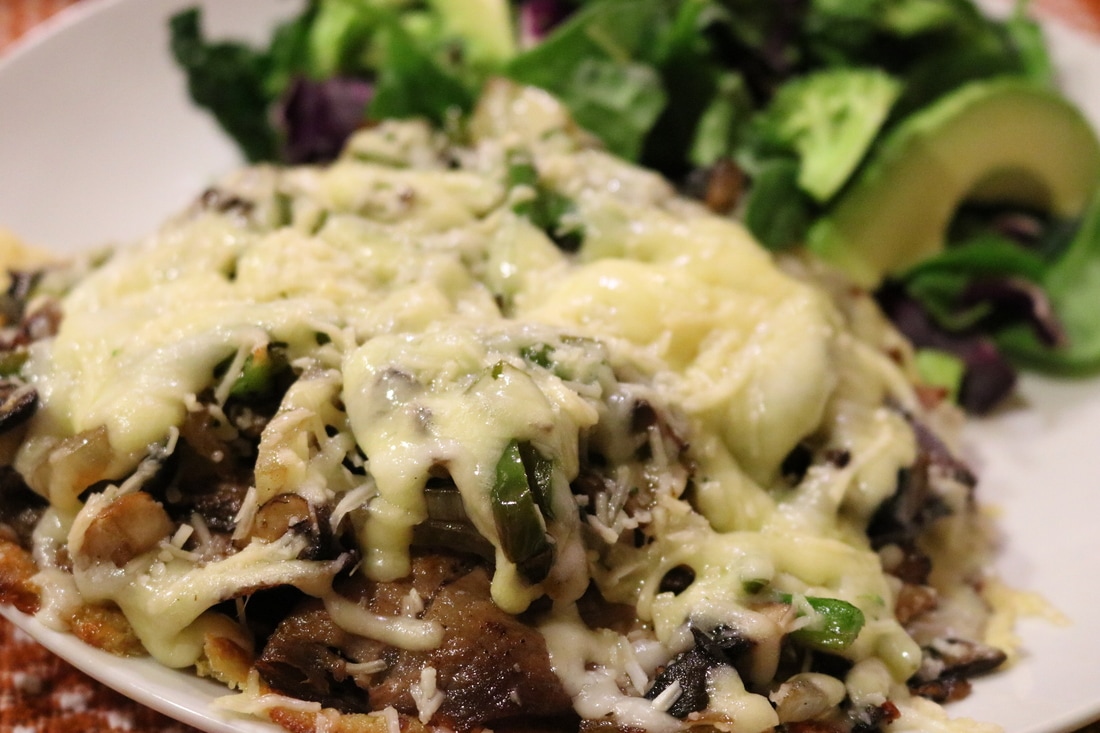 Little Jiro giving some good eye contact with those alien eyes! Little Jiro giving some good eye contact with those alien eyes! Many of us find ourselves working in environments that involve increasing interactions with others, despite the increased technology and opportunities to be more unique in the workplace and elsewhere. The more that we progress with this tech and ever shifting work environments, it is going to be even more important that we are effective with our communication. This is important for many reasons including; portraying your thoughts and ideas accurately, making sure your questions or concerns are heard and to improve collaboration with others while working towards a common goal. Without effective communication, all things become more difficult. We have all had those times, wether at work, school, or at home, when we were given a task but with little to no clarity on what we are actually trying to accomplish. At best, this will waste time as you try and figure it out on your own. But, what more often seems to happen is that this leads to confusion, frustration and much less accomplishment than if there was a clearly defined goal. If we start with good communication in mind, these setbacks can be mitigated if not avoided altogether. Here are 5 specific principles that I have found to be helpful.
3. Goals: Speak with clear goals in mind and review these goals often. This can also ensure that all parties are on the same page of what the focus is, and can help to accomplish more. 4. Check-in: Check in with your patient (friend or coworker), constantly to clear up any potential confusion or lack of understanding. This will make your life easier by reducing the chances of misunderstandings and give them a better experience. 5. Bring the details: Make sure to educate your colleague on exactly it is that you are working on and your proposed solution, including the details. But, make sure to come back to the big picture and relate this back to your overall goal with analogies or simplified comparisons to promote clarity and understanding. Clear up confusion.  Writing your goals down can help to make them a reality. Writing your goals down can help to make them a reality. Although these principles are written specifically for the context of outpatient physical therapy and personal training, these could be used and applied to most all situations or relationships where there is a common goal or plan to accomplish, and when simply working with others. All of these seem so simple, and they can be. It is oftentimes not the complicated things that are needed, but rather the simple things repeated over time.
0 Comments
 My Morning Alarms My Morning Alarms “Success Is the Progressive Realization of a Worthy Ideal” -Earl Nightingale When you start to look around, it is interesting to see all of the different types of people that are out in the world. I think this is such an amazing thing about people, the fact that we can be so different, yet deep down share so many of the same attributes, goals, problems and ambitions. With all of the access into people’s lives’ through online platforms and social media, especially those of the rich and famous, it can feel discouraging or at least intimidating when seeing how much accomplishment people are able attain in their life. Some people seem to have more hours in the day than the rest of us based on how much they are able to get done in a day. I know that I have struggled to get through my work day with spare time to do some laundry, make dinner, and try to squeeze in a little reading before going to bed and repeating this same sequence the next day. For me, this was the routine for my first year working as a full time Physical Therapist Assistant at an outpatient physical therapy clinic. I would wake up about an hour before going to work. I would give myself enough time to rush through a shower, possibly some breakfast or more likely MY COFFEE, then rush to work. When I came home, I would try to fit in a workout, make dinner, then, there I would find myself at the end of my day. After feeling more and more anxious about not making progress towards my personal goals outside of work, I decided to run a little thought experiment. What if I woke up HOURS before I needed to be at work and started working on my personal goals first? Could this allow me to get more done in my day? Or, at least make sure that I don’t neglect the important things such as my daily movement practice and morning journaling. I thought this may also be a good way to establish a consistent Morning Routine that could take pressure off of me the rest of the day to be productive. I decided to give this a shot and committed to myself that I would try 30 days of getting up at 5am during the week. I needed to be at work at either 9am or 10am, depending on the day and would therefore have multiple hours each morning to work on my personal goals. I would also force myself to stick to a bedtime of 9pm to allow for a full 8 hours of sleep. Because I am inherently lazy, (which is what my previous schedule had taught me), I figure, if I could stick to this schedule, it wouldn’t allow for my laziness to get in the way. Or in other words, If I Designed a better schedule, I wouldn’t have to rely on my Discipline. I’m not having to be discipline with limiting my sleep or burning the candle at both ends. Instead, I am just shifting my sleep time to start a little earlier and end a little earlier which allows me to have time when no one else is around, to take care of my own goals. I waste less evening time and therefore have more morning time to create opportunities. At first, as in with any other change, getting up this early was uncomfortable. But, change is always uncomfortable, and once I was able to get through this stage of a few weeks, I began to almost immediately start to see the fruits of my labor. I am now over a year in, and continue to see the benefits of putting in the time for myself daily, before going to work and doing what I am paid for. It is too easy to get caught in complacency with life if you are not constantly working on getting better and improving yourself daily. I am much more consistent with my daily movement practice and exercise. I have been able to read and consume audiobooks at about 3-4x the rate as before, I also seem to have much less stress the rest of my day at work. I believe this is due to the fact that by the time I get home from work, all I really have to do is eat dinner and relax before going to sleep. Knowing that I have already accomplished so many of my goals for the day, allows me to be better at focusing on the task at hand and not thinking about other projects or commitments, as these are already taken care of. Remember, it is important to know yourself and consider your personal strengths and weaknesses so that you can design around these to optimize the life that you want. Because I personally have a combination of the desire to accomplish and learn constantly but have daily lazy tendencies, I am constantly working on ways to design my time around my faults to create the ideal life for me that I desire. Life is a game of constant trial and error, adjust and pivot, and guess and checks. As each day provides new opportunities to learn and grow, I just do my best and try to get better with every attempt. And just as Earl Nightingale so cleverly points out that since “Success is the Progressive Realization of a Worthy Ideal”, as long as we are working towards our goal, we are successful. Success Equals Progress We were built to move. From how our anatomy is designed to how our brain learns and develops, all of your functioning improves with movement. And, exactly the opposite is true with the lack of movement or being sedentary. I know from my many years of experience working in physical therapy and from seeing friends and family as well as my own personal experiences, this very simple truth. When we stop using our body, we begin to lose the ability to use our body. Or, put more simply, Use It Or Lose It. This is demonstrated through many systems and physiological processes in our body. For example, muscle tissue and strength. When we stop exercising, or more severely are laid up in bed or in a hospital, we see almost immediate muscle atrophy and loss of strength. This same process happens with muscle extensibility or flexibility. If you stop reaching overhead and don’t use your shoulder joint, you will get stiff muscles at best and could develop muscle contractures or joint capsule adhesions at worst and lose the ability to reaching overhead. This similar process happens in our neurological system as well. Whenever we do a task, including how we hold our body (posture), and how we walk, our brain sends signals down nerve pathways that communicate how and when certain muscles should move and how far etc. Each time this happens, our body myelinates this specific neurological pathway and we become physiologically more efficient at this task. “Myelin is a fatty white substance that surrounds the axon of some nerve cells, forming an electrically insulating layer. It is essential for the proper functioning of the nervous system.The production of the myelin sheath is called myelination or myelinogenesis.” -wikipedia This happens constantly with everything we do, weather this is something we want to be good at or not. This is why so many people end up having very poor posture and many orthopedic problems from this later on in life. You don’t tend to notice these changes as they happen very slow and consistent over time. But as the other Daniel Coyle writes in his fantastic book The Talent Code, “Practice doesn’t make perfect, it makes permanent”. So, if we want to live a long and healthy life without pain as we age, I believe that hedging our bets by adapting a daily movement practice as one of the best time investments you can make.  Practicing Good Posture Practicing Good Posture What Is A Movement Practice? If we can practice good positions and movement, in a controlled environment, on a regular basis, it can go a long way in helping to mitigate against future ailments of aging as well as overuse and seemingly random injuries. Now, since everybody's body is different and what we do throughout our days and work, can be much different from each other. And, because of how our body adapts to repetitive movements and positions, a tailored approach is needed. I believe that a good movement practice should be specific to you and your body and should bridge the gap between what you do for work and full human physical capability. Now, I think a few definitions are in order since I am talking about a very specific approach when I this of the ideal movement practice. Good Positions and Movements For this purpose, I am talking about practicing good posture, a neutral spine and controlled movement in and out of those optimal positions. A good example of this could be a squat, where I am controlling my neutral spine position (posture) while moving my body up and down through space so that when I have to get off of the toilet or out of the car, my body is well practice and rehearsed on how to do this properly, therefore the task becomes easier for me and I have a reduced chance of injury because of this adaptation. Another example could be a weighted curl to press exercises where you are now taking a weight from your side to up overhead, then return it to your side. This is a great way to build stability in your shoulder joint as well as your spine while practicing taking this shoulder joint through its range of motion with control to again build the ability to repeat this next time you have to take that heaving box down from the top shelf in your closet or garage. Controlled Environment The controlled environment could actually be many different things or places. When beginning an exercise or routine, this could simply be your living room where you practice some bodyweight squats. If you enjoy working out with others, this could mean your local health club or crossfit gym. The important distinction is that it is a place that you can safely focus on improving your skill in whichever position or movement you are working on and also does Not include all of the environmental factors that would be present when executing this task in a real life scenario. So, using the previously discussed squat example for getting off of the toilet. Let's say this exercise routine is for your grandmother who is in her 80’s and is losing strength and is finding it harder and harder to get herself off of the toilet at home. A great exercise in a controlled environment for her could be in her kitchen, standing in front of the sink with a chair sitting behind her. She could wrap her hands over the edge of the sink for support with her arms and then sick back towards the chair, stopping just short of sitting, and then returning back to her starting standing position to practice this squat in a safe controlled manner. (Remember, this is not an exercise prescription and always consult your physician or physical therapist before starting or changing your exercise routine, don’t hurt grandma!) Regular Basis How many times per day or days per week someone should exercises or work on their movement practice can range vastly depending on many factors. I’ve seen and personally done exercise routines that are 2x per week, 4x per week and even 7x per week. The routines themselves differed and the condition I was in was different for each of these times periods also. Some factors to consider when looking at exercise frequency include; exercise experience, current health status, physical goals, age, gender, past or current injuries, nutrition, sleep, schedule, equipment access, exercise type, etc. As you can see, navigating the specifics and nuances of all these factors can be a daunting task and I believe that they are in constant flux or change. So, this is where the expertise of a coach, personal trainer, physical therapist, or other specialist can be very helpful in helping to navigate some good starting points and programs or approaches that might help you find what your body needs specifically. One point that may be where considering also is that oftentimes less is more especially when it comes to making physiological changes and even more so in regards to strength gain and muscle hypertrophy. But for other goals, such as improving our posture which is very much dominated by the constant repetitions with our neurological system tend to improve better with many many almost constant repetitions or practice. Therefore consult a professional, start slow, especially with things that are new and/or heavy and be consistent.  Sunny day looking towards Vashon Island, Wa. Sunny day looking towards Vashon Island, Wa. Over the past year, I have really begun to focus on the importance of being present and appreciative of the beauty that surrounds me at all times. This beauty can come in many different shapes, sizes and overall forms and is not always a static object. It can include the morning sunshine as it just starts to peek-up for the first time today. Or, the presence of a stranger who you strike up a conversation with while waiting for a bus or in line at the market. These special moments, feelings and experiences can be so powerful that just one of them can make your entire day or even week. Although these moments are happening constantly and all around us, It takes the willingness to pay the attention that is needed to fully experience and enjoy these moments. Think back to a first date that you have had in the past. You go out to dinner, which is of course the main event of the night. Here, you have hours of deep conversation and later can think back and appreciate that this is largely due to the additional focus or present state of awareness you had when meeting with this new potentially special person in your life. This awareness and focus is often given in new settings, situations or around new people, but can easily become discarded in everyday life. With all of the current distractions and people, businesses, technology etc, fighting for your attention, this can become even more difficult. Our attention continues to become more and more valuable as we have increasingly more options of how to spend our time, or more importantly our focused time = attention. If you are like me at all and find that you are easily distracted by whatever is around you or the next shiny object, you may find staying attentive a very difficult at first. I have however, found some strategies that help even the extremely distractible of people like myself, to stay focused and attentive more easily. Here I will review 3 strategies for for practicing or creating more focused time or attention throughout your day. Strategy #1 Avoiding the “Multitasking” Myth and Limiting Inputs. Although some people are completely convinced that they are great multi-taskers, there is some interesting research that suggests what’s actually happening is rather quick task-switching. The problem with this, is we lose focus, momentum, train of thought and simply just time by switching tasks. If we can therefore, focus on one specific tasks until that task is complete or a specific amount of time has expired. For this, I like the Pomodoro Technique. This is simply breaking up work tasks into 25 minute chunks where you focus on 1 task only, followed by a 5 minute “active” break. During this “active” break, the goal is to move your body physically around through space. This can be standing, stretching, walking in place, push ups, squats, or anything else that gets your body moving for 5 minutes. Also, this is a good time to limited inputs including distractions like, text messages, email, Facebook, social media, or anything else that pulls you away from the 1 task at hand. Strategy #2 "Work Harder On Yourself Than You Do On Your Job." -Jim Rohn Over the years, I have learned many things about myself including the fact that I am inherently lazy, and will come up with any excuse possible to avoid the tasks that help me to improve but require some discipline, like exercise. So, after experimenting with differing approaches for improving my consistency, I have found that making time for the activities such as, exercise, journaling, reading and meditation is great in theory but not as easy in practice. That is, unless I make time for and schedule these in, they will not happen. So, for me, these all important tasks that are meant to improve myself MUST happen before I do anything else especially work. That way, once I come home from work, I have already accomplished all of the things that I wanted to for that day which will bring me one step closer to each of my goals in self improvement. This Morning Routine has taken me some time to get used to, but has been one of the best improvements I have made over the past few years. I have shifted my wake and sleep times to accommodate this new schedule, which for me has my day start at 5am and end at 9pm. Strategy #3 Practice Mindfulness, Meditation or Just Being Present Being present and attentive to what is going on right now is such an important skill that it is worth practicing to improve upon. This seems obvious, but for me was not something that I regularly spent time doing. I just thought that I could turn on my attention at will and let it go when whatever I was doing seemed boring or uninteresting. So, after hearing person after person talk about improved present state awareness and reduced anxiety from practicing being present, mindfulness, meditation, etc, I decided to give it a try. I have been using an app called Headspace for a couple months now which is a short guided meditation done most days of the week. I currently do 15 minute sessions once per day and continue to be amazed at the benefits I feel. This includes reduced anxiousness, improved present state awareness and has given me a tool for being more aware of thoughts and emotions as transient, which reduces any negative affects associated with these. I am still new to this but am excited to continue to learn more and continue to grow with this practice. Now, everyone is different in what they want out of life and what constitutes as a successful day. Therefore, it may take a different approach or focus to get to the goals that you have laid out for yourself. As for me, using the 3 above mentioned strategies, I have been able to massively increase the number of successful days for myself and taken leaps forward to my person life goals. I hope that you find some of these strategies and information useful in your own journey! P.S. I would love to hear if you do any of the strategies I have listed or if you have found your own that work good for you!  Some tempting sugar laden junk food. Some tempting sugar laden junk food. Positive and Negative Effects I've Noticed So Far It is always interesting to see what personal experience can show you as you adapt to a new diet or dietary adjustment. Also, how much this can differ from one person to the next and how you can find a system that will work for you. Therefore, these are not necessarily what you will experience if you were to eat the same way as I have. Even with my girlfriend and, I whom I live with and share most of my meals with, has had some experiences that are slightly different than myself. Positive -During the first week of adding Bulletproof high fat coffee to my breakfast, I soon become too full to have coffee and breakfast food, and have since done the high fat coffee or tea only. -I started loosing my craving for additional caffeine in the late morning or after lunch throughout the first 1-2 weeks. I used to drink 2-4 cups of coffee throughout the day. -I have more steady energy throughout the day and don’t feel a crash after lunch. -I am more in-tune with my hunger or often times lack of hunger, and don’t feel like I HAVE to eat all the time or even at typical “meal times”. -I can skip an occasional lunch without any feeling of irritation and often times without even any hunger pains. -I stay full longer from meals and therefore rarely ever snack. -I only have to eat 2 times per day, since I have bulletproof coffee or tea in the morning and have 2 larger meals for lunch and dinner. I usually don't get hungry until lunch which saves me time and hassle in the mornings. -I have lost bodyfat, which for me wasn’t the goal but is a great side effect (from about 8%-7%). Negative -I no longer eat the typical comfort foods, for me that was; chocolate chip cookies, pizza, sandwiches, ice cream, donuts, fries and others just to name a few. -It can be more difficult to eat out at restaurants, although I can usually skip the starch and order extra veggies to make a meal, at most places. -During the transition to higher fat, I added too much too quick a few times, which increased my need for bathroom trips, until I figured out the right dose for me and got used to eating this way. -I constantly have to remind myself to not worry about too much fat, but instead focus on not getting too much protein, which I used to think the more the better. -It does take a little more planning and foresight to avoiding getting yourself in a situation where you do not have the food you need. Although, because your body will be getting used to burning fat, you can always skip a meal and probably won’t be too hungry from this surprisingly. Additional Resources and Research Web: Ketogenic-diet-resource.com This is my go to website for easy to understand information regarding the ketogenic diet. Well written and full of great resources, check this site out! CharlieFoundation.org This website has great information and resources for current applications of ketogenic diet for therapy as well as links to research and research studies that are current and/or recruiting. Also, the blog has some great keto recipes. Books: Keto Clarity by Jimmy Moore This is a very in depth look at the Ketogenic diet and has many contributors including multiple MD's researchers and people that have been using the ketogenic diet for years. Eat Fat Get Thin by Dr Mark Hymman This is a well written explanation of why it is so important to get the right nutrients into your body and why lots of good fats is an important piece of this puzzle. Questions or Comments? Leave Me a Note Below!  My "salad" which includes kale, spinach, lettuce, avocado, hard boiled egg, tomato, broccoli, cabbage, cheese, green olives, artichoke hearts, and sometimes bacon covered in homemade lemon vinaigrette dressing and MCT oil. My "salad" which includes kale, spinach, lettuce, avocado, hard boiled egg, tomato, broccoli, cabbage, cheese, green olives, artichoke hearts, and sometimes bacon covered in homemade lemon vinaigrette dressing and MCT oil. My Current Regimen And Personal Stats Over the past year of eating this high fat, moderate protein, low carb diet, I have found that certain foods and times of eating tend to work better for me than others. So far, for myself, this is what I have learned. I start out my day with the previously mentioned Bulletproof coffee or tea, which take the place of breakfast for me and allow my body to stay in a "fasting state" until lunch. For me, I drink my coffee/tea around 6am, after completing some morning routine items that includes my morning gut drink. (check out My Morning Routine Here). I will then workout and head to work where I will consume only water until lunch, which I eat at about 1:30pm. I don't snack because I don't get hungry between meals. The morning coffee/tea keeps me full until my lunch. Lunch consists mostly of leftovers from dinner the night before. This can vary, but usually includes a generous portion of “salad” and some small portion of protein and/or some hard cheese. Now, I should point out that when I say “salad”, this includes; kale, spinach, lettuce, avocado, hard boiled egg, tomato, broccoli, cabbage, cheese, green olives, artichoke hearts, and sometimes bacon covered in homemade lemon vinaigrette dressing and MCT oil. This is one of my go-to items and can be a stand alone meal, or with other times. This salad, which you can see covers most of my bases for nutritional needs, and tastes delicious. I will then head back to work until the evening when it is time to come home for dinner, around 7:30pm. This meal can vary a lot, but almost always includes a slightly scaled down version of my salad. Also, some sort of protein, which could be anything from burgers, to meatloaf to “reuben sandwiches”, chicken curry, stuffed chicken, pork shoulder, salmon, halibut, and many more. All of these recipes have been modified and made specifically for this diet, which is an important component of this food selection. One of the biggest differences from how I used to eat compared to how I am eating now is, smaller portions of protein with my meals. This can seem counter to what most people preach and is counter to what I did for a long time. I think it can be an important component of keeping your overall glucose levels down. This is to avoid protein to glucose conversion from having too much protein via gluconeogenesis. This can mean that even a low carb diet can be problematic if you have "too much" protein.  A sample meal macronutrient breakdown on myfitnesspal app. 70% Fat, 20% Protein, 10% Carbohydrates. A sample meal macronutrient breakdown on myfitnesspal app. 70% Fat, 20% Protein, 10% Carbohydrates. The tricky part with this is it seems to be different for everybody regarding how much protein is "too much". This can take some trial and error to figure out exactly how much protein your body needs, but I try to be around 20% of my daily total caloric intake, which tends to be around 100-150 grams of protein for me daily. This has been after lots of trial and error and is not aways perfectly exact. I also don't necessarily hit the same numbers everyday. I also didn't get to these numbers by measuring everything out first, and only eating what I calculated. I simply began by eating the amounts I was hungry for and felt that I needed and after a week or so of this, I would input the data into myfitnesspal which is a free app that will calculate your food intake calories, macronutrients and even micronutrients. After seeing where my numbers where at, based on my eating, I would adjust for usually less protein and more fat which is usually where I faltered. Through this process I learned more about the foods I was eating too, like how nuts can have more carbohydrates than I always thought. Keep in mind also, that I am about 160 lbs and workout most days including Crossfit and other HIIT workouts throughout the week. I have a very sensitive digestive system and am also NOT a competitive athlete. Therefore my nutritional goals, focus, and needs will most likely be different than yours. Make sure to always consult your physician or nutritionist before making any dietary changes. As previously discussed, the macronutrient ration goal of the ketogenic diet is somewhere in the range of 70% Fat, 20% Protein, and 10% Carbohydrates. Now remember, this is the percentage of each macronutrient based on total calories (food intake) NOT percentage of volume of food. Remember, 1 gram of Fat is 9 calories, while 1 gram of Protein and 1 gram of Carbs are both 4 calories each. This means that it doesn't take as much volume of foods that are high in fat as it does for protein or carbs to make up the same number of calories. The way I think of it is that, if my plate is 3/4 vegetables (including avocado, olive oil and/or MCT oil), and the last 1/4 split between protein and fat, I will be good. The vegetables include much needed fiber, which is vary important when eating a high fat diet. The food tastes good and keeps me full, lean and full of energy. I'm not sure what else you could want in a nutrition plan. Stay Tuned for Part 5: Positive and Negative Effects I've Experienced  How I Got Started Eating High-Fat After hearing about the ketogenic diet from many different sources, I decided to dive in a little deeper and give this a try for myself. Some of these people included; my buddy Lee Welton, podcasters including Joe Rogan and Tim Ferriss as well as doctors like Dr. Hymman who wrote Eat Fat Get Thin. The “gateway drug” or Trojan Horse for me into the ketogenic diet was a delicious beverage known as Bulletproof Coffee. This, now famous coffee recipe by Dave Asprey which includes; high grade Bulletproof coffee beans, which is delicious and is third party tested for toxins and molds, grass-fed butter (like Kerrygold brand) and C8 caprylic acid MCT oil (sold as Brain Octane and comes from coconut oil). ALL OF THIS IS BLENDED TOGETHER, which is a very important step to ensure the fat and coffee are mixed together well for that delicious creamy taste. I started this with the knock-off recipe, where I used the coffee I had in the house (organic coffee from Costco), coconut oil and the Kerrygold grass fed butter. This was still a great cup of coffee, but definitely not the same as using the Bulletproof coffee beans and Brain Octane C8 caprylic acid MCT oil. At first, my girlfriend and I started adding this to our breakfast in the morning.  After about a week (maybe less), we had to stop eating breakfast AND coffee because we both kept getting so full that we ended up putting most of our breakfast in the refrigerator for later. One thing that we began to notice pretty immediately, was that we started getting hungry a lot later in the day, especially as we started adding more fat to our other meals in the day. With the Bulletproof Coffee and about two weeks of transition, I was then and am still now able to have this as my "breakfast", and I don't get hungry until lunch (about 1pm) or sometimes later. I now I will also do a green tea variation of the Bulletproof coffee, where I simply swap out green tea for coffee but keep the fat. After a few weeks of being consistent with my Bulletproof coffee or tea "breakfast", I began to work on some more fine-tuning of my diet. The next step for me was to adjust my other two meals, lunch and dinner, by increasing my fat intake. The nice thing about this is, I get to eat a lot of salad and vegetables and delicious high quality foods including; good quality hard cheeses, grass fed butter, avocado, green olives, coconut oil and more. Stay Tuned for Part 4: My Current Regimen and Personal Stats  What Is The Ketogenic Diet? First off, it is important that you understand I am not a doctor, a dietitian, or nutritionist and am not advising on nutrition. I am simply sharing my experience and understanding through reading, listening, and lots of self experimentation. The material on this blog is for informational purposes only. As each individual situation is unique, you should use proper discretion, in consultation with a healthcare practitioner, before undertaking the protocols, diets, exercises, techniques, training methods, or otherwise described herein. The author and publisher expressly disclaim responsibility for any adverse effects that may result from the use or application of the information contained herein. My understanding of the ketogenic diet is that it was developed in the late 1920s for kids with epilepsy in which their seizures were uncontrollable with medication. "The ketogenic diet was designed in 1924 by Dr. Russell Wilder at the Mayo Clinic. Despite being highly effective in treating epilepsy, it fell out of fashion due to the surge in new anti-seizure medications in the 1940s. In 1994 Charlie Abraham’s family started The Charlie Foundation after his complete recovery from daily seizures despite trying all available anti-seizure medications and enduring a futile brain surgery. Charlie started the diet as a toddler and remained on it for 5 years. He is now a college student and remains seizure-free." www.CharlieFoundation.org Through research, they found that when these kids fasted, they no longer had seizures. Since you can't fast a kid or any human for that matter indefinitely, they began to develop a diet that mimics fasting physiologically, in order to provide the kids a way to avoid seizures, but still give their bodies the nutrients they need to survive. This was the ketogenic diet which is defined as make a diet with the macronutrient ratio of 70-75% fat, 20-25% protein, 5-10% carbohydrates. -ketogenic-diet-resource.com (These ratios can shift slightly depending on your particular body type, and food history.) The diet gets its name from the fact that when you switch to a high fat, moderate protein and low carb diet, your body begins to shift its main energy source away from glucose to ketone bodies, which come from fat and fat metabolism. When you are using these ketone bodies as your primary fuel source, you are said to be in ketosis, which can be tested a few different ways. This, at first glance, seems very extreme in a way, but I think after a little more explanation there will be some key points that make a lot of things clearer on this approach to nutrition. The first thing to remember, is that food volume and caloric density are different things. What I mean by that is, when you look at a plate of food, three-quarters of the plate should be covered by vegetables, with one-quarter remaining available for fat and protein. This can satisfy the proper ratio depending on the foods that are in those sections. One gram of carbohydrates is 4 calories one gram of protein is 4 calories one gram of fat is 9 calories. Therefore it takes less volume of fat to get the amount of calories that you need to satisfy the proper macronutrient ratio on this diet. So why is this important, and why the focus on eating such high fat? First of all, you need to have a basic understanding of how the body normally utilizes food for energy. On a typical American diet, your body takes the food that you've eaten and starts breaking it down to its smaller components through digestion. As it does this, it distributes the smaller parts of your food including glucose, to different parts of the body. Glucose specifically is taken from carbohydrates, sugar (and sometimes protein) and converted to energy (via ATP in the liver) then distributed to the bloodstream where it then gives you energy. Since our bodies are not perfectly precise, this increase in blood sugar can go higher than your normal concentration ( hyperglycemia) in which the body now needs to release insulin (a storage hormone) to manage and store this excess blood sugar for fuel to be used later as bodyfat. When this insulin is released and store this excess glucose, the blood sugar becomes lower than normal (hypoglycemia) and now your body begins to recognize this and begins to signal hunger to let you know that it needs fuel from more glucose, and the cycle continues. (You can read more about insulin at the American Diabetes Association). When your body releases insulin, more releases than needed to manage the current glucose levels, your blood sugar then drops which makes you hungry again. This is one mechanism that's acting on your energy levels when on a regular American diet. Another, is that of your hormones. When you eat carbohydrates you promote Ghrelin stimulation. A hunger hormone specifically hungry for that of glucose and carbohydrates. Conversely, when you eat fat, you stimulate Leptin production. This is a satiation hormone which allows you to feel more full and satisfied. Another nice effect of eating a high-fat, moderate protein and low carb diet is that because your body gets used to burning fat for fuel. It will then begin to also burn your body fat for fuel throughout the day and with diminished eating or low caloric intake. Another interesting point to consider for me was that there are some negative associations with metabolism of excess glucose and carbohydrates. In general, some of the these negatives include increased blood sugar, increased need for insulin and the excess storage of adipose (fat) tissue from this. Also, these foods take away space that could be used for more nutrient dense vegetables or high quality fats. These are foods that my body needs including the vitally essential building blocks to create and repair important tissue throughout my body and brain.
Stay Tuned For Part 3: How I Got Started Eating High Fat  My Food Story About 4 years ago, I was in school studying physical therapy. My life was full with studying, working as a personal trainer, working as a physical therapy aide and trying to manage all the stresses of life. I continued to finding myself with constant stomach problems that I attributed to stress at the time. These symptoms could range from day to day, but would be generally a combination of; upset stomach, increase bathroom trips, poor sleep quality, and trouble eating many types of food because they would increase these symptoms. I've always been into learning about health and nutrition and have mostly tried to eat foods that I thought were the healthiest for me. I've also been involved in sports as well as weight lifting and would try to match my eating with my fitness goals. This would include items you see typically in a “healthy” diet for most Americans who are trying to eat “healthy”. I was focused on getting enough carbohydrates to have energy for activities, enough protein to support my muscles and some fat to balance all of this out. I took a very similar approach to the very familiar Food Pyramid.  Some typical foods for me include, sandwiches, salad, chicken breast, eggs, broccoli and hummus, chips with beans and salsa, and multiple protein shakes throughout the week. I would fluctuate between trying to eat every 3 hours to just eating at the 3 meal times of breakfast, lunch and dinner. I also have struggled at times with cravings for sweets, mostly chocolate, ice cream and cookies as these were plentiful in my household growing up. And to be clear, I would not only indulge these cravings but would go to the extreme of eating so much of these foods that I would make myself sick that night and often times into the next day. I have been known in the past to eat an entire half gallon of ice cream in one sitting. This may be hard to believe for many of you but those who have lived with me in the past can attest to this unfortunate fact. Other than this, I would have the occasional burger and fries or fast food meal, but those were not daily occurrences. I finally started to try the elimination style dieting, where I would eliminate suspect foods that I think may be causing some problems, and then after a few weeks, try reintroducing them one at a time to see, if in fact this food did cause a problem. I tried this with dairy and with wheat, and found out some very interesting things. Both of these for me are problematic, but in different ways and to a much different degree than each other. I find that for dairy, as I used to drink lots and lots of milk, milk was actually one of the biggest problems. But, butter, cheese and eggs all seem to be fine. As for wheat, I found this to be very problematic to the point where I have tested myself after months of not eating this and within 15 minutes of eating an english muffin, I was in the bathroom. I have also found that other grains although not as problematic, tend to affect my stomach and can cause some digestive problems including; corn and to a lesser degree rice. So, after figuring out which foods I know I should not be eating, I started to adjust my diet in a way that made me feel much better, but still left me with some lingering problems. I would oftentimes go from being slightly under what I needed for total food intake for the day, to taking jumps over what I needed by eating too much late-night dark chocolate and peanut butter, cookies and ice cream, which are my kryptonite. Then, I started hearing about this idea of the ketogenic diet which is a diet that is high in fat, moderate protein and low carbohydrates. This made me start thinking about my own fat consumption and realized that I had a very low fat diet. I used to think this was good but after reading and understanding more about food nutrition and biology, I understood that our bodies desperately need good quality fats for so many of the physiological processes that are going on, as well as for repairing tissue, such as nerve tissue and brain tissue. The more I learn about this, the more my view about nutrition has shifted. I have now been eating a modified (slightly more protein) ketogenic diet for about a year now and have never felt this good before in my life!
Stay tuned for Part 2: What Is The Ketogenic Diet? Where I discuss my understanding of the Ketogenic Diet  Sleep is one of the most important aspects of our health and I would argue and one of the most neglected. If we were to simplify the categories that are important to pay attention to regarding our health and wellness, I would say the three most important categories are nutrition, sleep and activity. If you neglect one of these three pillars you will guarantee your-self failure. If you sleep well and eat well but don't have enough activity, there will be problems. If you exercise and eat well but don't sleep well, there will be problems. And if you sleep well and exercise well but don't eat properly there will also be problems. Why is sleep so important? There are many reasons why sleep is one of the most important aspects of our health and wellness. One of these is that this is when our body is in the most anabolic state, meaning that the body rebuilds tissue during this time. This is important for everything including rebuilding the cells in our organs, regenerating energy throughout our body, as well as rebuilding muscle and connective tissue. How much sleep do we need? This seems to vary mostly depending upon age, with secondary factors including, lifestyle and individual variations. The consistent trend is for younger people to have more sleep and less as you age with adult and elderly recommendations between 7 to 9 hours. This is according to the National Sleep Foundation. It also matters when you sleep, mainly lining this up with your circadian rhythm which involves your body temperature and melatonin production, a natural sleep hormone. What can affect my quality of sleep? This can be many factors including, room temperature, noise and light exposure. The temperature is most often recommended to have slightly cooler temperature than you would have throughout the rest of your house. I myself find 67 degrees to be the right number for my bedroom at night. You want to limit loud noises and sounds, which seems obvious because these can become a immediate disruptor. This is especially true when coming intermittently throughout your sleep and can startle you awake increasing cortisol levels, a stress hormone. Light exposure can also be an important factor where studies have shown blue light exposure in the evening can limit melatonin production. This makes it increasingly hard to sleep at night and may have other health implications since melatonin is an important antioxidant and helps with immune function. Are there any quick and easy solutions? I have found that a room air conditioner can help solve the temperature problem and give you control to the exact degree of how you want your room temperature to be set. Limiting noise can be something as simple as adjusting your overall environment and or using ear plugs or possibly a white noise device to block other potential noises that may disrupt your sleep. Avoiding light exposure can be done with blackout shades are great but can sometimes be a little pricey. A sleep mask can be an inexpensive fix, but sometimes these can be slightly uncomfortable. You can also use Lights Out Travel Light Blockers for those little annoying lights, such as on stereos, room air conditioners or alarm clocks. So, make sure that you prioritize your sleep because it is an important pillar of good health and wellness. Also, make sure to manage the factors that you can control to optimize your sleep including the temperature, noise and light exposure and have a restful night sleep! |
Author : Jordan ProudfootHere are my thoughts and insights into fitness and wellness to be the best you possible. Archives
February 2019
Categories
All
|












 RSS Feed
RSS Feed
